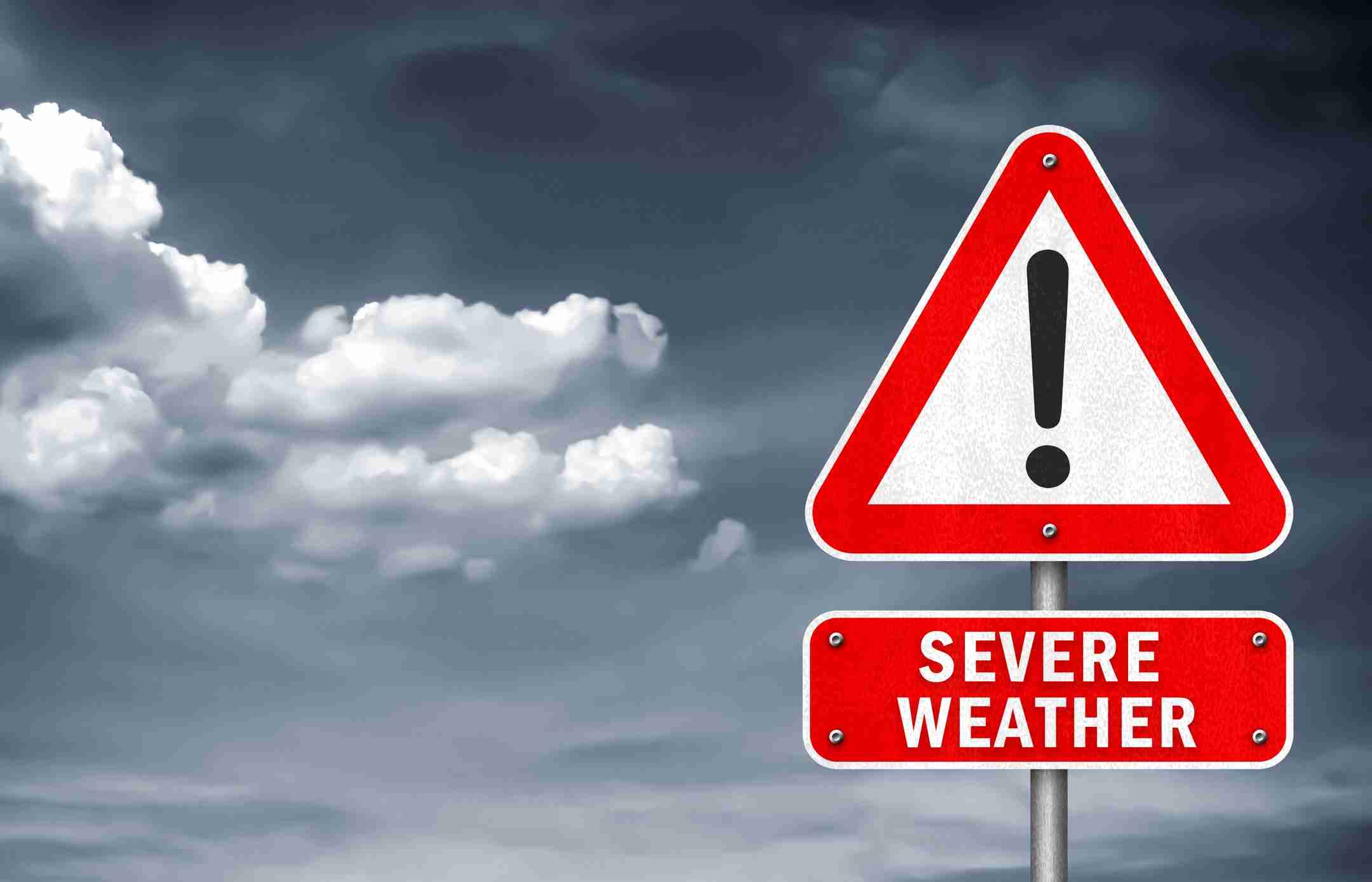Flood Safety During Severe Weather: Day 5 Of Awareness Week

Table of Contents
Understanding Flood Risks in Your Area
Knowing your local flood risk is the first step towards effective flood safety. Many areas experience different types of flooding, each presenting unique challenges. Riverine floods, caused by overflowing rivers, often develop slowly. Flash floods, however, can occur rapidly with little warning, usually due to intense rainfall. Coastal flooding is driven by storm surges and high tides, particularly dangerous in low-lying coastal regions.
To understand your personal risk:
- Check your property's flood risk online: Utilize resources like FEMA's flood map service (in the US) or your local government's website. These maps often show floodplains and historical flood data. Search online for "[your location] flood risk map" to quickly find relevant information.
- Understand the warning signs of different flood types: Learn to recognize the signs of impending riverine floods (rising water levels, rapidly flowing rivers), flash floods (heavy rainfall, rapid water accumulation), and coastal floods (storm surge warnings, high tide predictions).
- Familiarize yourself with evacuation routes: Know the designated evacuation routes in your area. Plan multiple routes in case one becomes impassable. This crucial step ensures you can escape quickly and safely during a flood.
- Contact your local emergency management agency: They can provide specific information on flood risks and preparedness strategies within your community.
Creating a Flood Preparedness Plan
A comprehensive flood preparedness plan is your best defense against the destructive power of floods. This plan should be a living document, regularly reviewed and updated.
Essential components of a strong flood preparedness plan include:
- Develop an evacuation plan: This plan should detail your evacuation route(s), designated meeting place, and transportation methods. Consider various scenarios and potential road closures.
- Identify a safe meeting place for family members: Choose a location outside your flood-prone area where everyone can reunite after evacuation.
- Pack an emergency kit: Your kit should include essentials such as non-perishable food, bottled water, medications, first-aid supplies, flashlights, batteries, blankets, and important documents (identification, insurance policies).
- Secure important documents and valuables: Store these in waterproof containers or bags, ideally in an elevated location. Consider digitizing important documents for extra security.
Here's how to make your plan effective:
- Practice your evacuation plan regularly: Familiarize your family with the plan, especially children. Conduct regular drills to ensure smooth and efficient evacuation.
- Keep your emergency kit readily accessible: Store it in a designated location and check its contents regularly, replacing expired items.
- Update your plan annually or after significant weather events: Review and adjust your plan based on changing circumstances and new information.
- Share your plan with family and neighbors: This ensures everyone is informed and prepared.
Protecting Your Home from Flood Damage
While you can't completely eliminate flood risk, you can significantly reduce the potential for damage to your home through preventative measures.
- Elevate appliances and electrical outlets: Move appliances and electrical outlets off the ground to prevent water damage.
- Install check valves on sewer lines: This prevents sewage backup into your home during a flood.
- Consider flood barriers or sandbags: These can provide a temporary barrier against rising floodwaters.
- Learn about flood insurance options: Flood insurance can provide crucial financial protection in the event of a flood. It's often not included in standard homeowner's insurance.
Using waterproof materials in basements and elevating electrical systems are further steps to minimizing damage.
Responding to Flood Warnings and Evacuations
Heeding flood warnings and evacuating when instructed are critical to ensuring your safety. Stay informed through various channels:
- Monitor weather reports closely: Pay close attention to weather alerts and warnings issued by national and local meteorological agencies.
- Follow official evacuation orders immediately: Don't delay; immediate evacuation is crucial for survival.
- Never drive or walk through floodwaters: Floodwaters can be deceptively deep and swift, concealing dangerous debris and electrical hazards.
- After the flood, take necessary precautions to avoid hazards like downed power lines, contaminated water, and structural damage.
Post-Flood Safety and Recovery
Post-flood safety is equally important. Returning to your home too early can be extremely dangerous:
- Avoid contact with floodwater: Floodwater is often contaminated with sewage and hazardous materials.
- Contact your insurance company immediately: Report the damage and start the claims process as soon as possible.
- Check for structural damage before entering your home: A professional inspection is highly recommended before re-entering a flood-damaged building.
- Seek professional help for cleanup and repairs: Flood cleanup and repairs require specialized skills and equipment.
Stay Safe During Severe Weather – Prioritize Flood Safety
This Flood Awareness Week article highlighted the importance of understanding flood risks, developing a comprehensive preparedness plan, protecting your home, and responding appropriately to warnings and evacuations. Remember that post-flood safety and recovery are also critical aspects of flood safety. By taking proactive steps to improve your flood safety, you can significantly reduce the risk to yourself and your loved ones. Share this information with your family, friends, and community – ensuring flood safety is a shared responsibility. Prioritize flood safety, and let's work together to build more resilient communities.

Featured Posts
-
 B C Billionaires Bid For Hudsons Bay Leases Could Reshape The Retail Landscape
May 26, 2025
B C Billionaires Bid For Hudsons Bay Leases Could Reshape The Retail Landscape
May 26, 2025 -
 Hasil Sprint Race Moto Gp Argentina 2025 And Klasemen Terbaru
May 26, 2025
Hasil Sprint Race Moto Gp Argentina 2025 And Klasemen Terbaru
May 26, 2025 -
 Jadwal Lengkap Moto Gp Inggris 2024 Sirkuit Silverstone Klasemen And Prediksi Marquez
May 26, 2025
Jadwal Lengkap Moto Gp Inggris 2024 Sirkuit Silverstone Klasemen And Prediksi Marquez
May 26, 2025 -
 Lewis Hamilton And Former Teammate A Touching Moment In New F1 Footage
May 26, 2025
Lewis Hamilton And Former Teammate A Touching Moment In New F1 Footage
May 26, 2025 -
 Twenty Years Later A 2005 Romance Films Return To Box Office Glory
May 26, 2025
Twenty Years Later A 2005 Romance Films Return To Box Office Glory
May 26, 2025
Latest Posts
-
 Stranger Things Season 5 Release Date Episode Titles Cast And Everything We Know
May 29, 2025
Stranger Things Season 5 Release Date Episode Titles Cast And Everything We Know
May 29, 2025 -
 Stranger Things Season 5 Characters We Wont See Again
May 29, 2025
Stranger Things Season 5 Characters We Wont See Again
May 29, 2025 -
 Characters Who Will Likely Not Return In Stranger Things Season 5
May 29, 2025
Characters Who Will Likely Not Return In Stranger Things Season 5
May 29, 2025 -
 Stranger Things Tales From The Upside Down Netflix Spin Off Coming In 1985
May 29, 2025
Stranger Things Tales From The Upside Down Netflix Spin Off Coming In 1985
May 29, 2025 -
 Stranger Things The First Shadow First Look Photos
May 29, 2025
Stranger Things The First Shadow First Look Photos
May 29, 2025
